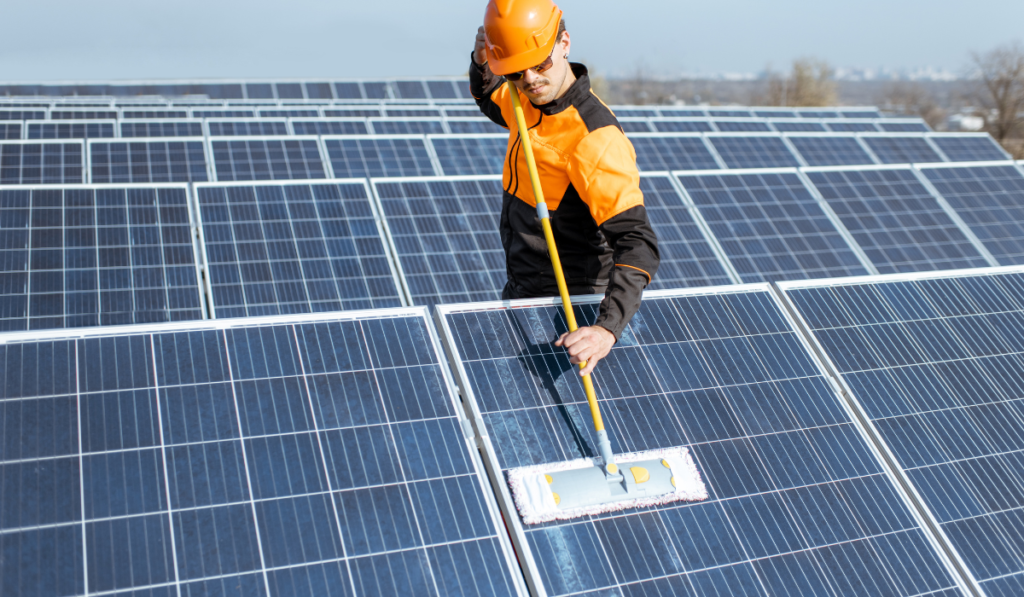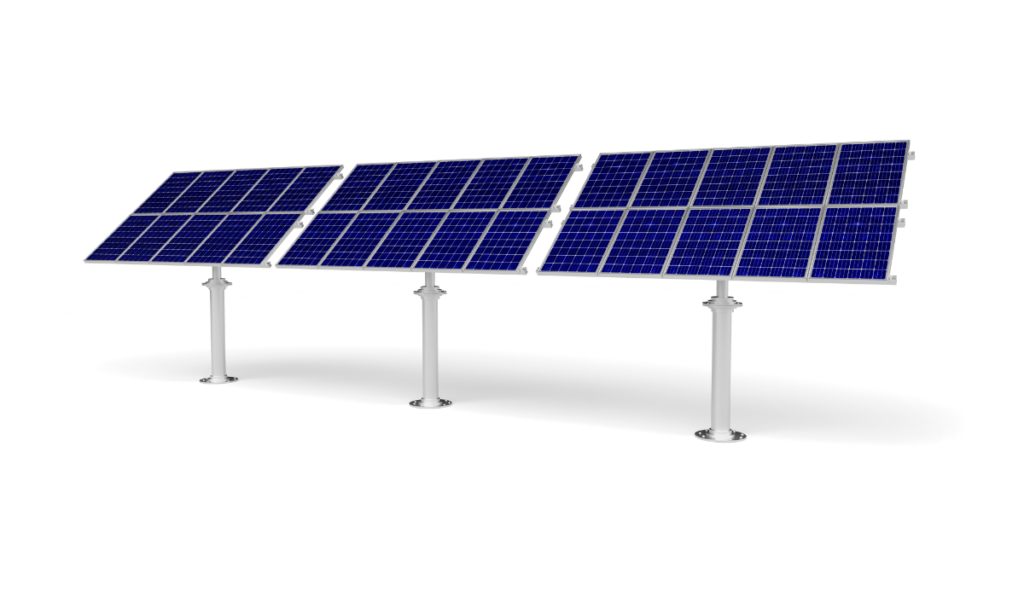Getting the most out of your solar panels doesn’t have to be complicated. With a few smart upgrades and simple habits, you can boost their efficiency and save more on energy bills. Start by choosing high-efficiency panels like monocrystalline or CPV cells, which convert sunlight into power more effectively. Add anti-reflective coatings to capture extra light, keep panels clean to avoid dust blocking the sun, and angle them just right to catch the best rays. Toss in upgrades like solar trackers or an MPPT charge controller, and you’ll squeeze every drop of energy from your setup. Let’s break down these easy, practical steps to make your solar system work harder for you.
Choose High-Efficiency Panels

High-efficiency solar panels can significantly improve energy production. One of the best options is High Concentrated Photovoltaic (CPV) cells, which maximize energy conversion by focusing sunlight onto highly efficient solar cells.
When selecting panels, look for those with an efficiency rating above 20%. Higher efficiency means more electricity is generated from the same sunlight, making your system more effective.
Monocrystalline panels are a great choice because they generally outperform polycrystalline ones. They have a higher efficiency rate and perform better in low-light conditions, making them ideal for maximizing solar power output.
Apply Anti-Reflective Coatings
1. Use Nano-Coatings to Minimize Light Reflection and Maximize Absorption
Solar panels work by absorbing sunlight and converting it into electricity. However, a portion of sunlight is reflected off the panel surface, reducing efficiency. Nano-coatings are designed to minimize this reflection, allowing more light to enter the photovoltaic cells. These coatings create a thin, invisible layer that alters the way light interacts with the surface, ensuring more photons are absorbed rather than lost.
2. Ensure Coatings Are UV-Resistant and Durable for Long-Term Effectiveness
Solar panels are exposed to constant UV radiation, rain, dust, and temperature changes, which can degrade coatings over time. Choosing a UV-resistant and weatherproof coating ensures it remains effective for years. A poor-quality coating may wear off, reducing efficiency and requiring frequent reapplication. High-quality coatings, like silica-based or polymer coatings, provide long-term durability and protection against environmental factors.
3. Many Modern Panels Come with Built-In Coatings, but Additional Coatings Can Be Applied for Further Improvement
Most high-quality solar panels today already have a factory-applied anti-reflective coating. However, if you’re using older panels or looking to boost efficiency even further, you can apply an extra layer of anti-reflective coating. Some coatings also offer self-cleaning properties, preventing dust and dirt from sticking to the surface, which further enhances efficiency.
Keep Panels Clean

Dirt, dust, and bird droppings can block sunlight and reduce solar panel efficiency. Regular cleaning ensures maximum energy absorption and prevents performance loss.
Use soft brushes, mild detergent, or deionized water to clean panels safely without causing scratches or damage. Avoid using harsh chemicals that might degrade the panel surface.
In areas with frequent dust buildup, consider self-cleaning coatings or automated cleaning systems to maintain efficiency with minimal effort. These solutions help keep panels clear without the need for constant manual maintenance.
Optimize Panel Angle & Direction

The right panel angle ensures maximum sunlight exposure throughout the year. A good starting point is to set the tilt angle equal to your latitude (e.g., 30–45° for most regions). This helps capture the sun’s rays more effectively.
To get even better efficiency, adjust the tilt seasonally. In winter, increase the angle to catch the lower sun, and in summer, reduce the tilt to avoid overheating. If manual adjustments aren’t feasible, fixed-tilt mounts at the optimal yearly average still provide good results.
Positioning is just as important. If you’re in the Northern Hemisphere, face panels south; if in the Southern Hemisphere, face them north. This simple adjustment ensures they receive the most sunlight throughout the day.
Use a Solar Tracker (or Adjust Panels Manually)

A solar tracker automatically follows the sun’s movement, ensuring panels stay in the best position for maximum energy capture. Single-axis trackers move from east to west, increasing efficiency by 20–30% compared to fixed panels.
For even better performance, dual-axis trackers adjust for both daily and seasonal sun shifts, boosting output by up to 40%. These are ideal for large-scale solar setups but can be costly for residential users.
If a tracker is too expensive, a manual seasonal adjustment is a simple, cost-effective alternative. Tilt panels higher in winter and lower in summer to optimize sun exposure. For rooftop systems, check tilt adjustments twice a year to improve efficiency.
Prevent Shadows
Shadows can significantly reduce solar panel efficiency by blocking sunlight and disrupting energy production. Even partial shading on a small section of a panel can impact the entire system’s output.
Regularly trim trees, bushes, or nearby structures that cast shadows on your panels, especially during peak sunlight hours. If possible, install panels in an open, unobstructed area to ensure maximum exposure.
For rooftop installations, position panels away from obstructions like chimneys, antennas, or neighboring buildings. If some shading is unavoidable, use microinverters or power optimizers to minimize energy loss by ensuring that shaded sections don’t affect the entire system. A site analysis before installation can help identify potential shading issues and optimize placement.
Use Mirrors or Reflective Surfaces
Mirrors and reflective surfaces can redirect more sunlight onto your solar panels, increasing energy absorption. Placing mirrors or white surfaces around the panels helps reflect light onto them, especially in areas with limited direct sunlight.
For a simple and practical approach, use aluminum sheets, reflective films, or white gravel near ground-mounted panels. If your panels are near walls or fences, applying reflective paint to these surfaces can boost light capture without major modifications.
However, it’s important to position mirrors carefully. Too much concentrated light can overheat the panels, reducing efficiency and lifespan. Adjust angles to prevent excessive heat buildup while still enhancing sunlight exposure.
Improve Airflow to Reduce Heat
Excessive heat can reduce solar panel efficiency, so proper airflow is essential to keep them cool. One practical way to improve ventilation is to elevate panels slightly off the mounting surface, allowing air to circulate underneath and dissipate heat naturally.
For best results, install panels on tilted racks instead of flat surfaces. A tilted design not only improves sun exposure but also enhances airflow, preventing heat buildup that can lower energy output.
If installing panels on a metal roof, leave enough space between the panels and the roof to avoid trapping heat. Adding spacers or a cooling gap can significantly reduce temperature-related efficiency loss. In particularly hot climates, natural ventilation or passive cooling solutions can further optimize performance.
Upgrade to an MPPT Charge Controller
An MPPT (Maximum Power Point Tracking) charge controller helps extract the highest possible energy from your solar panels by adjusting voltage and current to optimal levels. Unlike traditional PWM controllers, MPPT technology ensures that no power is wasted, especially in varying sunlight conditions.
Upgrading to an MPPT controller can boost efficiency by 20–30% compared to a standard PWM (Pulse Width Modulation) controller. This is particularly useful in cloudy weather or partial shading, where MPPT can still optimize power output while PWM controllers would lose efficiency.
For off-grid systems, an MPPT controller is a game-changer. It helps regulate voltage properly, ensuring batteries charge efficiently without overloading or undercharging. This extends battery life and maximizes energy storage, making it a smart investment for anyone serious about solar power reliability.
Conclusion:
Boosting your solar power isn’t rocket science—it’s about smart choices and a little TLC. From picking top-notch panels to angling them perfectly and keeping them clean, every step adds up to more energy and savings. Add in shiny upgrades like reflective surfaces or a clever MPPT controller, and you’ll squeeze every drop of power from the sun. And don’t forget: a shady panel is a sad panel, so keep things sunny! With these tricks, you’ll not only save money but also give the planet a high-five. Ready to shine? Your solar system (and your wallet) will thank you!
Hi, I’m Jon! I write about solar energy and make it easy to understand. My family runs a solar installation business, so I’ve been around solar panels my whole life. On my blog, I share simple tips, clear explanations, and helpful advice to help people switch to solar. When I’m not writing, I’m working with my family to bring clean energy to more homes and businesses.